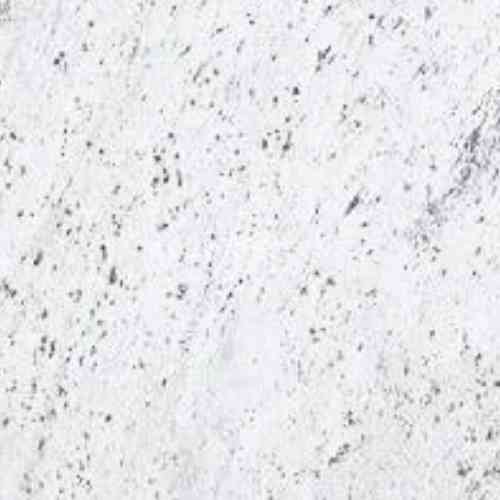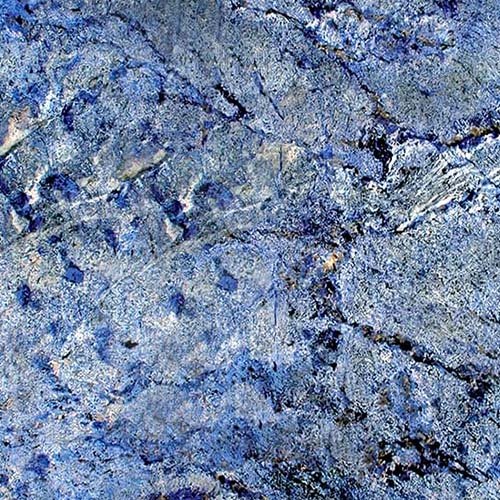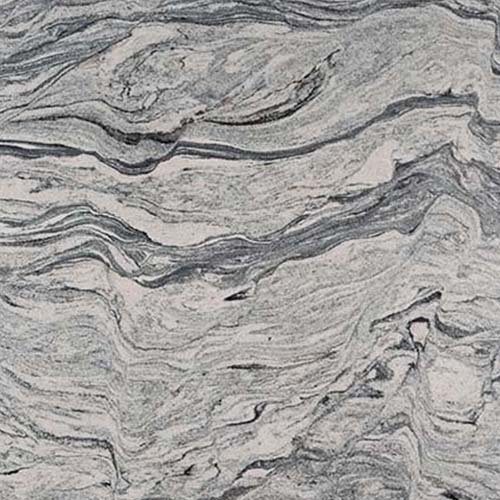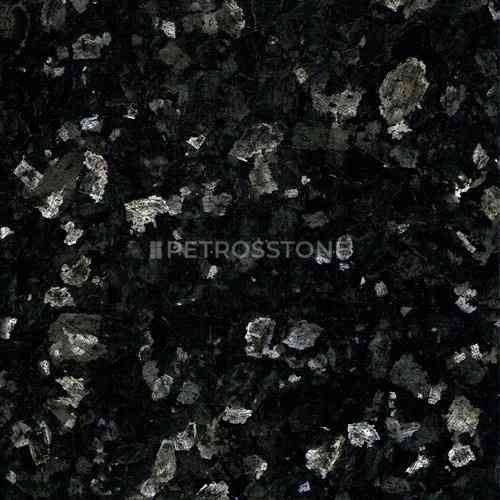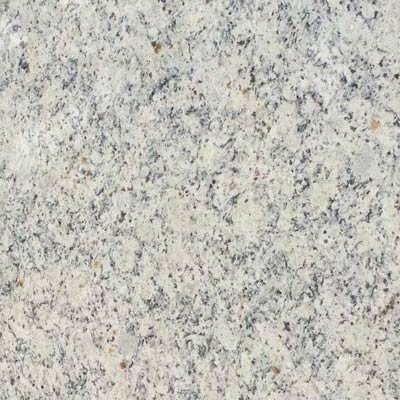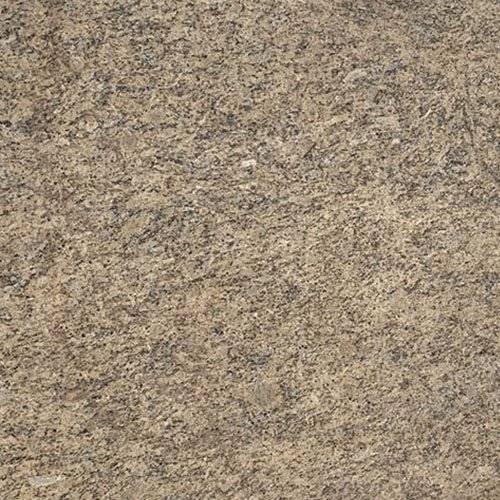
You would definitely want to know about the beautiful types and price of Makrana marble. It’s an exclusive, high-quality natural stone from India’s one and only – Rajasthan. Let’s find out about its special qualities and uses. Petros Stones will also analyse how this stone stacks up against other marbles. Particularly, in terms of cost and longevity.
What is the Makrana Marble?
As the name clearly implies, the Makrana marble is derived from the Makrana region. It is located in the Indian state of Rajasthan. This marble is produced abundantly in Makrana. One can even say that this region makes some of the best white marble in the world. In fact, Makrana marble has been used in the creation of some well-known structures. This also includes our very beloved Taj Mahal. So yes, this marble dates back to the Mughal Empire when it initially became known as a symbol of architectural grandeur.
Price of Makrana Marble

| Type of Makrana Marble | Description | Price Range (INR per square foot) |
| Makrana White Marble | Highly used in residential & commercial buildings, temples, and monuments. Known for its pure white color and durability. | ₹500 – ₹1500 (Starting USD 60/SQM) |
| Albeta Marble | Milky white with a brown texture, often used for floor designs to give a luxurious look. | ₹400 (Starting USD 53/SQM) |
| Albeta White Marble | Similar to Albeta but with a whiter tone, used for decorative purposes. | ₹600 (Starting USD 72/SQM) |
| Brown Albeta Marble | Available in grey and panther brown patterns, used in various forms. | ₹200 (Starting USD 25/SQM) |
| Dungri Marble | One of the oldest and finest quality marbles, used for flooring and wall cladding. | ₹75 (Starting USD 10/SQM) |
Makrana Marble’s Origin

Makrana marble is a metamorphic rock with a calcium carbonate content of roughly 90–98% that is found in a single deposit in India. Only Makrana, a tiny village 110 kilometres west of Jaipur, has the marble.
This, The International Union of Geological Sciences (IUGS) has declared that marble from Makrana in Rajasthan as Asia’s first Global Heritage Stone Resource (GHSR).
In addition to adding a feather to Rajasthan’s cap, the inclusion of the stone in the GHSR has also been excellent news for the state’s stone market. This marble is responsible for the amazing wonders like the Taj Mahal in Agra and the Moti Masjid in Lahore
Why is Makrana Marble Better?
Sturdy
Makrana marble is exceptionally strong and won’t break down for many years. For projects that will likely be subjected to extreme weather or be used regularly, it is an excellent choice.
Versatile
Makrana Marble stands out from other materials. This is particularly because of its distinctive colour and appearance. It is indeed a fantastic option for any project. This is owing to its many qualities and striking beauty.
Luxurious
Makrana white marble’s distinctive appearance elevates projects and makes it perfect for high-profile projects.
Classic
This stone plays a significant role in Hindu religious rituals that make idols of their deities. It makes their house of worship appear lovely and revered.
Pure
A God temple’s excellence is influenced by the purity of the marble used to create it. This marble adds accents of piety to a home and is a soft stone that is simpler to carve as compared to other materials.
How to identify Makrana Marble?
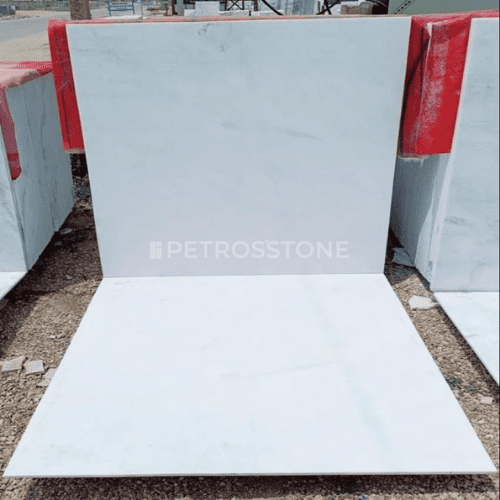
- Genuine Makrana Marble can easily be recognized. One can identify its distinctive white hue. translucent texture, smooth, polished surface, and lack of chips, cracks, or stains.
- Makrana marble’s ageless beauty and outstanding quality continue to enthral architects, designers, and homeowners.
- Even if it has amazing benefits, including durability, heat resistance, and beauty, it’s important to take into account its porosity, expense, and upkeep needs.
- Makrana marble has the power to significantly improve architectural designs and give them a timeless feeling of elegance and luxury when utilized carefully and maintained.
For more in-detailed inspection and detection of authenticity of makrana marble get in touch with us at Petros®
Monuments made of Makrana Marble
Some of the most iconic monuments are made up of Makrana Marble, these include:
Agra’s Taj Mahal
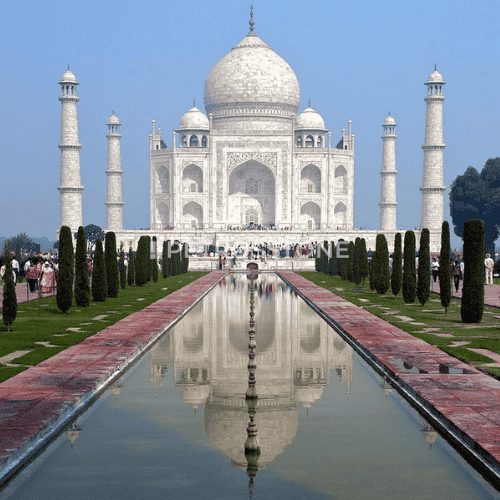
It’s a well known fact that Taj Mahal is iconic. It stands tall as a representation of love and pure grandeur. This UNESCO World Heritage monument was constructed in the 17th century by the Mughal Emperor Shah Jahan. And the best part? The Taj Mahal is made entirely of Makrana marble! Hence, it is prized for its strength and flawless white hue.
Ayodhya’s Ram Mandir
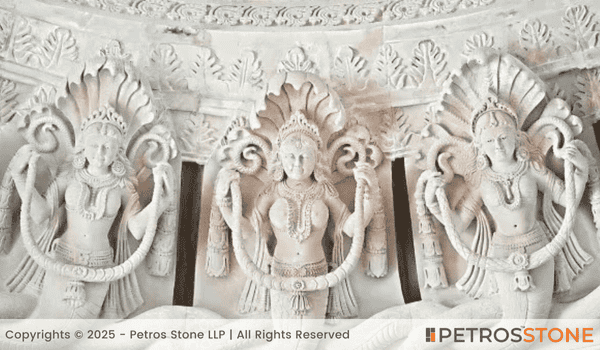
The Ram Mandir is a magnificent Hindu temple devoted to Lord Ram. It is a modern architectural wonder with a sanctum made of Makrana marble. It has a flawless white finish and elaborate embellishments.
Here’s a detailed article on the prices of different types of Indian marble
Kolkata’s Victoria Memorial
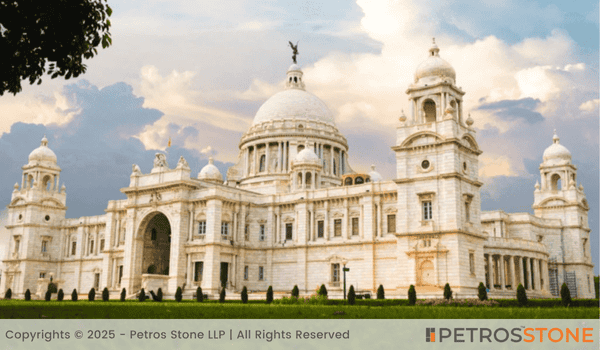
A monument honouring Queen Victoria during the British era. Makrana marble gives this magnificent building a timeless charm while fusing Mughal and European architectural styles.
Temples of Dilwara, Mount Abu

Dilwara temples are a collection of exclusively pretty Jain temples. It’s known for its magnificent architecture and elaborate marble carvings.
These were constructed between the eleventh and fourteenth centuries. The use of Makrana marble in these temples simply increases their lifespan and beauty.
Abu Dhabi’s Sheikh Zayed Mosque

Situated in the United Arab Emirates, this mosque is among the biggest in the world. Makrana marble is widely used in the mosque’s interiors and domes, demonstrating its popularity across the globe.
Makrana White Vs Vietnam White Marble
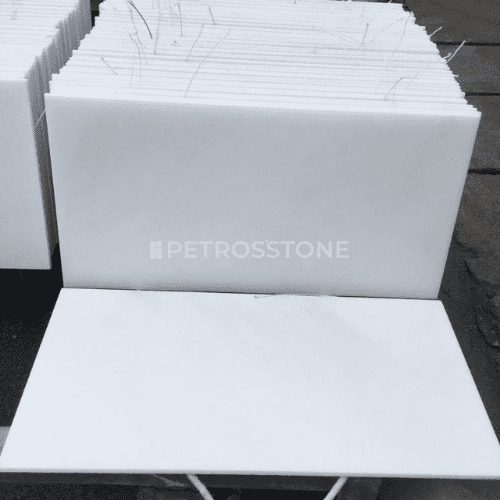
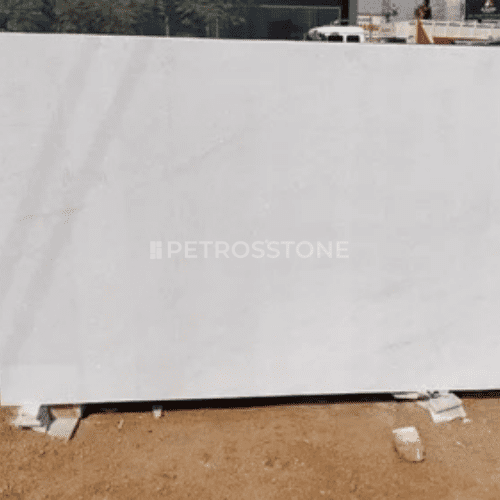
Vietnam marble and Makrana marble are two of the best varieties of marble because of their quality, look, and adaptability. Therefore, knowing how these two marbles differ from one another can help you choose the one that best suits your needs.
| Aspect | Makrana Marble | Vietnam Marble |
| Origin | Quarried in Makrana, Rajasthan, India, known for its historical significance and heritage value. | Quarried in Vietnam, sourced from mountainous regions with modern mining techniques. |
| Color and Pattern | Predominantly pristine white with subtle grey or black veining; also available in pink and grey shades. | Offers a wide range of colors and patterns, including bright white with minimal veining. |
| Texture and Finish | Fine texture with high luminosity, giving a natural glossy finish. | Texture varies; can be polished or honed for different finishes. |
| Durability | Highly durable, capable of lasting centuries; resistant to water seepage due to low porosity. | Durable and resilient, suitable for heavy traffic areas but may not match the longevity of Makrana. |
| Maintenance | Requires regular cleaning and occasional sealing to maintain its pristine look. | Requires sealing but is relatively less prone to staining compared to other marbles. |
| Applications | Ideal for heritage projects, sculptures, flooring, countertops, and wall cladding. | Suitable for contemporary designs such as flooring, countertops, wall cladding, and decorative accents. |
| Cost | Premium pricing due to its quality and historical significance; more expensive than Vietnam marble. | More cost-effective and budget-friendly while still offering good quality for modern designs. |
| Aesthetic Appeal | Timeless elegance with a classic look; often used in iconic structures like the Taj Mahal. | Modern and sleek appearance; preferred for contemporary architectural styles. |
| Aspect | Makrana Marble | Vietnam Marble |
| Origin | It is situated in Makrana, situated in Rajasthan, India. It is known for its historical significance and heritage value. | It’s quarried in Vietnam. It is sourced from mountainous regions via modern mining techniques. |
| Color and Pattern | Makrana is pristine white with subtle grey or black veining. It may available in pink and grey shades. | This marble offers a wide range of colors and patterns. This also includes bright white. It has minimal veining. |
| Texture and Finish | Makrana has a fine texture with high luminosity. This is why a natural glossy finish. | The texture for the Vietnam Marble varies. It can be polished or honed for different finishes. |
| Makrana is pristine white with subtle grey or black veining. It may be available in pink and grey shades. | It’s highly durable, capable of lasting centuries. It is resistant to water seepage due to low porosity. | Durable and resilient, making it suitable for heavy traffic areas. But it may not match the longevity of Makrana. |
| Maintenance | Makrana may require regular cleaning at times. It requires occasional sealing to maintain its pristine look. | Vietnam marble too requires sealing. However, it is relatively less prone to staining compared to other marbles. |
| Applications | Makrana is ideal for heritage projects. One may also use it for sculptures, flooring, countertops, and wall cladding. | Vietnam Marble is apt for contemporary designs. This includes flooring, countertops, wall cladding, and decorative accents. |
| Cost | Makrana offers premium pricing due to its quality and historical significance. Thus, it is more expensive than Vietnamese marble. | Vietnamese marble is cost-effective and budget-friendly. However, it still offers good quality for modern designs. |
| Aesthetic Appeal | Timeless elegance with a classic look. It is often used in iconic structures like the Taj Mahal. | Modern and sleek appearance; preferred for contemporary architectural styles. |
Both Vietnam and Makrana marbles are stunning. They are long-lasting, however, their styles and price points differ.
Vietnam offers adaptability and a modern appeal, whereas Makrana is renowned for its classic elegance.
Vietnam marble offers a modern aesthetic and a variety of colors. It is available at multiple price points. However, Makrana marble is renowned for its classic elegance and historical value. It is perfect for heritage projects.
Is Makrana Marble Long-lasting?
Yes, indeed, Makrana marble is undoubtedly long-lasting. All it needs is routine care to retain its integrity and beauty. Another reason why it’s easy to keep is because of its longevity and low water absorption rate. It differs from other marbles that may require sealing and prompt stain control.
Feel free to get in touch for a free consultation, quote, and get a detailed understanding from our experts here at Petros®. Visit https://petrosstone.com/ or call +91-8446360361 and WhatsApp

Hi, I’m Shivangi,
With years of experience in the architecture and design space, I write to bridge the gap between material knowledge and practical application. At Petros® Stone, I create content that highlights the beauty, function, and impact of natural stones, helping homeowners and professionals make confident design decisions.
Explore my LinkedIn profile to learn more about my work!
White Galaxy Granite
Blue Bahia Granite
Silver Cloud Granite
Black Pearl Granite
Dallas White Granite
Santa Cecelia Granite

